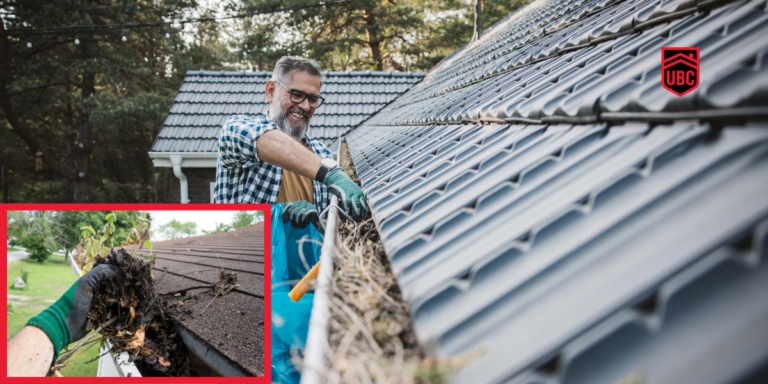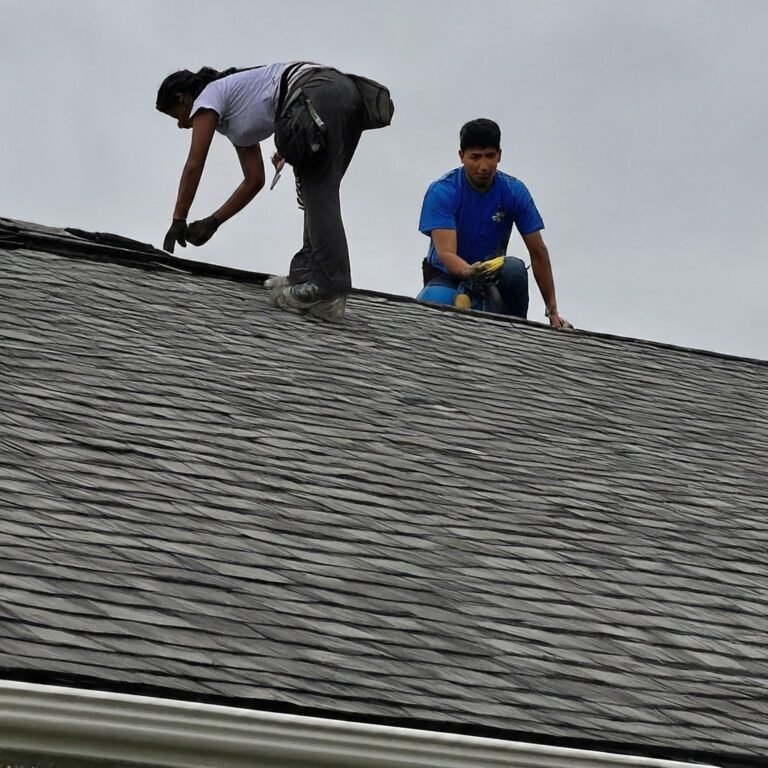The Importance of Roofing Boots: Enhancing Safety and Performance for Roofers

Roofers put their lives on the line every day, and their footwear plays a critical role in ensuring their safety and productivity. Unlike working on flat ground, even a minor slip on a rooftop can lead to serious injuries or even death. Considering the uneven surfaces, variable weather conditions, and potential for punctures from nails or debris, proper roofing boots are essential for creating a safe work environment.
The right roofing boots will provide superior traction on a variety of surfaces, including wet or sloped roofs. They should also be puncture-resistant to protect against nails and other hazards commonly found on rooftops. Additionally, features like shock absorption and ankle support can help reduce fatigue and prevent injuries throughout the workday.
The Essentials: Boot Features Every Roofer Needs
Treading Carefully: Importance of Slip-Resistant Soles
Essentials for every roofer include slip-resistant soles. Slips and falls are common hazards faced on roofs, making it crucial to have boots with soles designed for good traction on wet surfaces. Look for boots with deep treads or lugs to provide confidence and stability when navigating slippery roofing materials.
Standing Tall: Ankle Support and Stability
Withstanding the pitched roofs requires boots that offer excellent ankle support to help maintain balance and stability. Look for boots with high-traction treads that provide secure footing on steep inclines and uneven surfaces. Plus, good ankle support can reduce the risk of falls and injuries while working at heights.
Roofers face various hazards on the job, including punctures from nails, staples, and debris. Therefore, puncture protection and durable soles are vital features to look for in roofing boots. The right boots will have thick, puncture-resistant soles to prevent injuries and keep feet safe from sharp objects commonly found on roofs.
Weathering the Storm: Material Toughness and Endurance
When working in unpredictable weather conditions, durability is key in roofing boots. Waterproof materials can keep feet dry and comfortable, preventing discomfort and potential hazards. Look for boots made from high-quality, durable materials such as leather and rubber, offering long-lasting performance in various weather conditions.
For instance, leather boots provide excellent durability, water resistance, and breathability, while rubber boots are known for their excellent slip resistance and waterproofing capabilities. Choosing the right material will depend on personal preferences and the specific working conditions encountered on the roof.
The Right Fit: Sizing and Comfort for Long Days
Size Matters: Finding the Perfect Fit
Your roofing boots should fit like a glove to ensure maximum comfort and safety on the job. Finding the perfect size is crucial – not too tight to restrict circulation or too loose to cause blisters. Perfect sizing will prevent discomfort and allow you to focus on your work without distractions. Make sure to measure your feet accurately and try on different brands to find the ideal fit for your feet. Don’t underestimate the importance of getting the right size for your roofing boots.
All-Day Comfort: Cushioning and Ergonomics
Comfort is key when you’re spending long hours on the roof. Look for roofing boots with ample cushioning to provide support and reduce fatigue throughout the day. Ergonomic designs that support your feet and ankles will help prevent strain and injury, allowing you to work more efficiently. Invest in boots with features like padding, arch support, and shock absorption to ensure all-day comfort without compromising on safety.
In terms of all-day comfort, cushioning and ergonomics are crucial considerations. The right roofing boots will provide support and reduce fatigue, allowing you to focus on your work without discomfort. Look for features such as padded insoles, arch support, and shock absorption to enhance comfort and performance on the job.
Material World: Leather vs Rubber Showdown
After a long day of roofing work, the debate between leather and rubber roofing boots continues to be a hot topic among roofers. Leather boots are known for their durability, offering long-lasting performance in tough conditions. They provide excellent protection against punctures and debris, making them a reliable choice for many roofers. However, some argue that leather boots may lack the flexibility needed for agile movement on the roof, potentially hindering performance.
Rubber Revolution: Waterproofing and Environmental Resistance
Versus the classic leather debate, rubber roofing boots bring a revolution in terms of waterproofing and environmental resistance. Rubber boots excel in keeping feet dry and comfortable during wet weather conditions, a crucial feature for roofers working in various environments. The waterproofing capabilities of rubber boots add an extra layer of protection against discomfort and potential hazards posed by moisture on rooftops.
A common choice for roofing boots is the material they are made of. Leather and rubber each have their own set of advantages and disadvantages, depending on the specific needs of the roofer. While leather is preferred for its durability and breathability, rubber offers superior waterproofing and slip-resistant qualities. Roofers must weigh these factors carefully to choose the most suitable material for their work environment and comfort.
High-Tech Treads: Advances in Roofing Boot Technology
Once again, the roofing industry is embracing technological advancements to enhance safety and performance for roofers. Roofing boots are now being crafted from cutting-edge materials that offer superior protection and durability. These innovative materials are designed to withstand the harshest conditions while providing comfort and support throughout the workday.
To address the dangers of slips and falls on roofs, manufacturers are developing roofing boots with smart soles that incorporate innovative traction enhancements. These advanced soles are engineered to provide better grip on wet surfaces, steep pitches, and uneven terrain, reducing the risk of accidents and injuries for roofers. With improved traction, roofers can work with confidence and stability, even in challenging conditions.
The Safety Stomp: Additional Protection Features
Not only do roofing boots provide imperative protection from slips, falls, and punctures, but additional features such as toe caps and metatarsal guards can take safety to the next level. An imperative part of roofing footwear, toe caps (steel or composite) safeguard against falling objects, while metatarsal guards provide added protection for the delicate bones in the foot. By investing in boots with these features, roofers can minimize the risk of serious foot injuries on the job.
Water Woes: Ensuring Proper Waterproofing
Metatarsal guards offer protection from impact injuries to the top of the foot, an often overlooked area. Proper waterproofing is imperative for roofing boots to keep water out and maintain comfort throughout the workday. Wet feet not only lead to discomfort but can also cause blisters and other foot issues. Investing in roofing boots with effective waterproofing features will ensure that roofers can stay focused on the task at hand without being hindered by damp or soggy footwear.
The Heat Is On: Fire-Resistant Materials and Features
To protect against extreme conditions, roofing boots with fire-resistant materials and features are crucial. Heat and flame resistance are imperative when working in environments where fires may occur, such as hot tar roofing. Along with slip resistance and puncture protection, fire-resistant boots provide an additional layer of safety for roofers. To ensure maximum protection and peace of mind, investing in boots with fire-resistant properties is paramount.
Upkeep and Care: Maintaining Your Roofing Boots
Daily, it’s important to remove any dirt, mud, or debris that may have accumulated on your roofing boots. Use a stiff brush or a damp cloth to wipe them clean. For tougher stains, consider using a mild soap or specialized boot cleaner. Let your boots air dry completely before storing them to prevent mold and mildew growth. Regular cleaning not only maintains the appearance of your boots but also ensures their longevity and performance on the job.
Repair and Replacement: When to Let Go
Boots that show signs of extensive wear and tear, such as worn-out soles, cracked leather, or loose stitching, should be repaired or replaced to maintain optimal safety and performance. Inspect your boots regularly for any damage and address issues promptly. In cases where repairs are not feasible, it’s crucial to invest in a new pair of roofing boots to continue working safely on the roof. Your feet are your most valuable tools, so don’t compromise on their protection.
Step Up Your Game: Selecting the Best Roofing Boots
Now, when it comes to selecting the best roofing boots for your work on the roof, there are several key factors to consider. From comparing brands and models to finding the right balance between cost, quality, and safety, making the right choice can make a significant difference in your performance and well-being.
Best roofing boots stand out for their durable materials, slip-resistant soles, and puncture protection. Consider comparing various brands and models to find the best fit for your specific needs. Look for features like ankle support, waterproofing, and traction to ensure maximum safety and performance on the roof.
Price Point: Balancing Cost with Quality and Safety
On the topic of price, it’s crucial to strike a balance between cost, quality, and safety. While it may be tempting to opt for the cheapest option, investing in high-quality roofing boots can ultimately save you money in the long run by preventing injuries and providing long-lasting performance.
Step up your safety game by considering the overall value of the roofing boots you choose. Look for options that offer a good balance of affordability, durability, and safety features. Be mindful that, your feet are your most important tools on the roof – don’t skimp on quality when it comes to protecting them.
Protect Your Home with a New Roof: Get a Free Roof Replacement Estimate Today!
Your roof is your home’s first line of defense against the elements. Over time, wear and tear can take its toll, leaving your roof vulnerable to leaks, wind damage, and even collapse. If your roof is showing signs of aging, such as missing shingles, cracked flashing, or water stains in your attic, it’s time to consider a replacement. United Building Contractors (UBC) offers top-quality roof replacement services at competitive prices.
UBC understands the importance of a healthy roof, that’s why we offer free roof replacement estimates. Our experienced roofing professionals will inspect your roof, assess its condition, and provide you with a detailed estimate tailored to your specific needs. We also offer a convenient online estimate tool on our website, allowing you to get a quick starting point from the comfort of your home. Don’t wait until a small leak turns into a major headache. Contact UBC today at 952-800-ROOF (7663) and ensure your home is protected for years to come.
FAQ
Q: Why are roofing boots necessary for roofers?
A: Roofing boots are necessary for roofers because they protect against common hazards such as slips, falls, and punctures. They provide slip resistance, fall protection, and puncture protection, reducing the risk of injuries while working on roofs.
Q: What are the key features to look for in roofing boots?
A: When choosing roofing boots, look for features such as slip-resistant soles for grip on wet surfaces, high-traction treads for stability on steep pitches, and durable materials that can withstand wear and tear. Waterproofing, steel or composite toes for protection from falling objects, and comfort features like cushioning and breathability are also important.
Q: How do roofing boots enhance safety and performance on the job?
A: Roofing boots enhance safety by reducing the risk of accidents like slips, falls, and punctures. They provide stability, protection, and comfort, allowing roofers to focus on their work without worrying about potential hazards. By investing in quality roofing boots, roofers can improve their performance and efficiency on the job.







